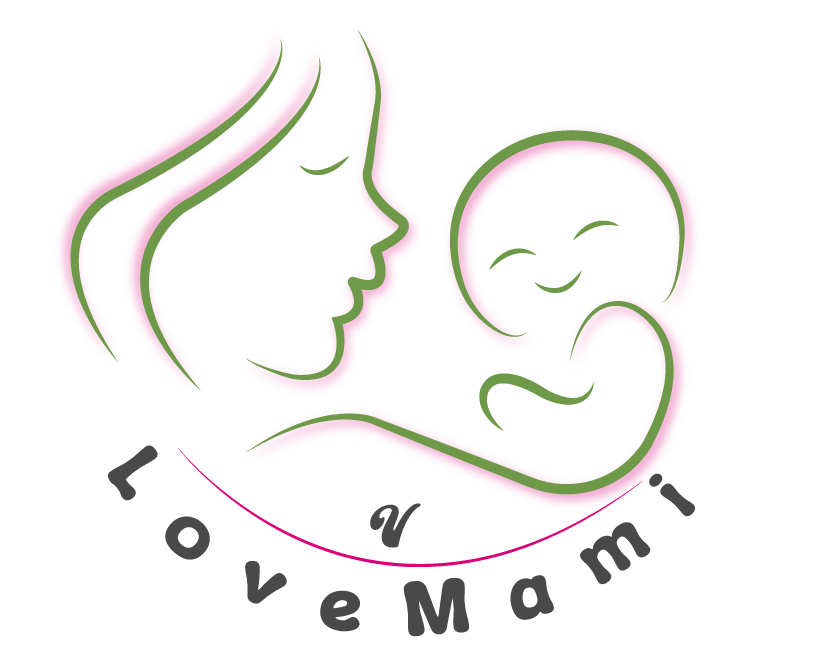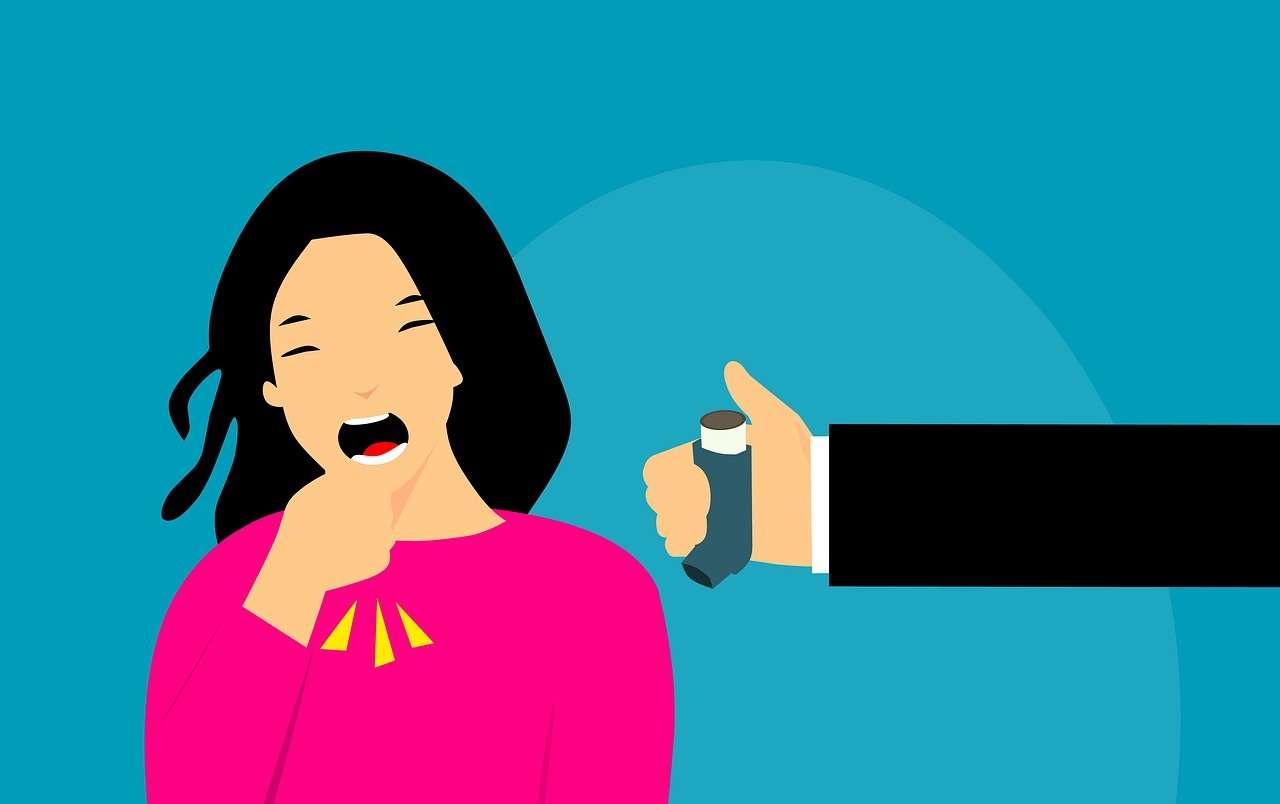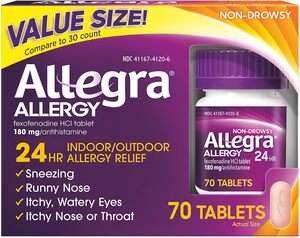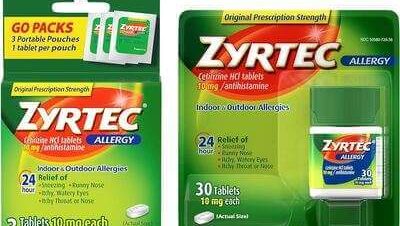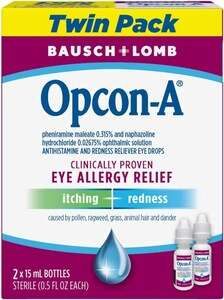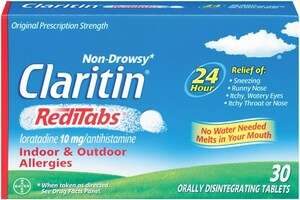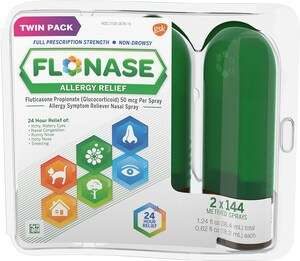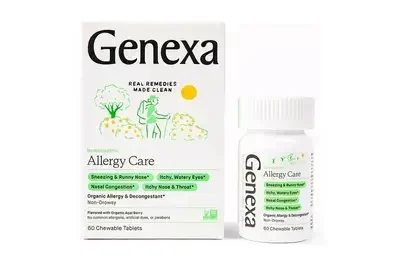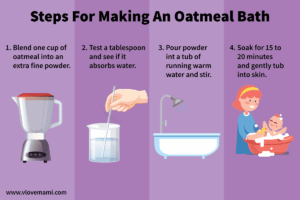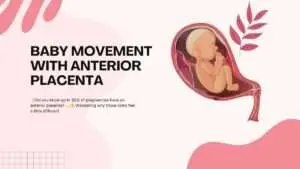These Allergy Medications’ Active Ingredients Provide the Best Symptom Relief
Having a good over-the-counter (OTC) allergy medicine on hand is essential if you or your child suffers from allergies. When utilizing OTC nasal steroid spray, symptoms including runny nose, congestion, sneezing, and itchy, watery eyes are successfully relieved. When choosing an over-the-counter allergy medication, consider your symptoms, the kind of antihistamine, possible side effects, and age appropriateness. Take note of your recommended dosage method as well, such as tablets, nasal sprays, or eye drops.
People described how eye drops worked for them over a few weeks, as well as how tablets, liquids, and nasal sprays functioned over months of use, according to survey results. These recommendations are realistic and accessible because their experiences show what was most effective in reducing and preventing allergy problems.
Out Top Picks:
✔Allegra Allergy 24-Hour Indoor-Outdoor allergy Relief Tablets
✔Zyrtec 10 mg Cetirizine HCI, 24-Hour Allergy Relief Tablets
✔ Opcon-A Bausch and Lomb Eye Allergy Relief Drops, Best for Itching + Redness
✔Claritin RediTabs 24-Hour Allergy Relief, Non-Drowsy Medication
✔Flonase Allergy Relief Nasal Spray, Fluticasone Propionate 50 mcg Per Spray
✔Bonus Med: Genexa Allergy Care, Best Homeopathic Allergy Medicine
Key Considerations for Selecting Over-the-Counter Allergy Medication
What Is Histamine?
It helps to understand histamine in general to properly understand the role of antihistamines. One important molecule that is essential to many processes in the body is histamine, which is also essential to local immunological responses.
Usually, mast cells—a type of immune cell—are where histamine is kept. These cells are triggered to release their contents when your body comes into contact with an allergen, which causes allergy symptoms to appear. Notably, the main chemical responsible for the itching brought on by allergies is histamine. It can also cause your blood vessels to become more permeable, which can lead to congestion.
Seven Top Types of Antihistamines
fexofenadine hydrochloride (HCl) (Allegra)
cetirizine HCl (Zyrtec and Amazon Basic Care All-Day Allergy)
loratadine (Claritin)
fluticasone propionate (Flonase)
diphenhydramine HCl (Benadryl)
levocetirizine (Xyzal)
naphazoline HCl (Opcon-A)
For most people looking for over-the-counter allergy relief, choosing non-drowsy antihistamines is the best option. In case you’re looking for an allergy medication that doesn’t make you sleepy, Allegra Adult 24-Hour Non-Drowsy Antihistamine is a great option. One 180-milligram tablet should be used daily by those 12 years of age and older, however, caution should be exercised in case of any adverse effects, such as nausea or vertigo. Other suggested non-drowsy alternatives are Children’s Claritin Chewables 24-Hour Allergy Relief and Claritin 24-Hour Allergy Medicine.
While drowsiness is a rare adverse effect, several allergy drugs, like Zyrtec 24-Hour Children’s Allergy Syrup and Xyzal Allergy Tablets, do cause it in small numbers of users. Until, certainly, these drugs don’t make you sleepy, it’s best to start taking them at night.
Antihistamine Formats
Antihistamines come in four main forms: liquids, tablets, eye drops, and nasal sprays. Which format you select will mostly depend on your personal preferences and the particular symptoms you are dealing with. Age recommendations are also quite important when choosing. For example, children as young as 6 years old can use nasal sprays, and toddlers as young as 2 years old can use specific eye drops and liquid oral meds. Some manufacturers even provide nasal sprays specifically for kids, such as Children’s Flonase Sensimist, which is safe to use as early as age 2.
All of these types of medication relieve common allergy symptoms, regardless of the manner used.
Pills: oral medications can effectively relieve runny nose and itchy/watery eyes, although some over-the-counter medications may cause drowsiness.
Nasal sprays: sprayed into the nostrils, they reduce congestion and itching. It is important to note that steroid nasal sprays do not have this issue, but antihistamine nasal sprays may make you drowsy or leave a bitter taste in your mouth.
Liquid: Depending on the kind taken orally, liquid antihistamines can make you drowsy, but they work well to relieve a range of allergy symptoms.
Eye drops: Though headaches may be a possible side effect, eye drops, which are available over-the-counter and with a prescription, can relieve red, itchy eyes.
Liquid treatments, such as Zyrtec 24-Hour Children’s Allergy Syrup, are frequently recommended for young children. Children’s Claritin Chewables 24-Hour Allergy Relief is a good choice if your child enjoys chewable. My two-year-old daughter also loves chewable medicine.
Allergist Aaron Westreich, MD, of New York, says that oral antihistamines are typically the first medication that most individuals use. His favorite allergy medicine, despite its effectiveness, is intranasal steroids such as Flonase Allergy Relief Nasal Spray.
Symptoms and Age Suitability
The type of symptoms you have helps determine the best allergy medication, in addition to the dosage format. OTC allergy medications may be helpful if you’re suffering from watery, itchy eyes, runny nose, or sneezing. Medical experts advise taking into account an over-the-counter nasal steroid spray, such as Flonase Allergy Relief Nasal Spray, if congestion is also a problem.
Our recommendation is to use Bausch + Lomb Opcon-A for eye problems. These thoroughly tested eye drops successfully reduce eye redness and itching.
Xyzal Allergy Tablets might be a good choice if allergies are brought on by pets. Within an hour, these tablets start to act, providing up to 24 hours of relief from runny nose, itchy, watery eyes, and sneezing that are brought on by animal dander. Maintaining regular compliance with the recommended dosage of allergy drugs is the best way to control and reduce severe symptoms.
Two distinct groups of people should avoid some antihistamines: adults over 65 and children under the age of two. Antihistamine side effects in young children can include drowsiness, irritability, and gastrointestinal problems since they are more sensitive.
The side effects of antihistamines can also affect adults over 65, with an increased risk of constipation, impaired vision, anxiety, drowsiness, and urine retention. This sensitivity is more noticeable when first-generation antihistamines are taken.
Time Antihistamines Take To Work and Possible Negative Effects
Depending on the kind of antihistamine, over-the-counter (OTC) allergy medications have different times when they start to work. For example, Zyrtec 24-Hour Allergy Relief Tablets can start to relieve symptoms in as short as 20 minutes, whereas Allegra Adult Non-Drowsy Antihistamine Tablets Provide relief in one hour. Regular usage of your allergy medicine is the most important aspect in establishing its long-term effectiveness, even if different medications have different half-lives.
The negative effects of antihistamines can vary depending on the kind and amount used. Since it can cross the blood-brain barrier, sleepiness is the main adverse effect to be aware of.
First-generation antihistamines, like Benadryl Ultratabs, typically cause drowsiness, weariness, dry mouth, and clumsiness for four to six hours. For this reason, taking Benadryl just before operating a car or other machinery is discouraged against.
Luckily, many of the more recent, second-generation antihistamines are either non-sedating or only mildly drowsy and offer extended relief. Prominent examples include Zyrtec, Xyzal, Allegra, and Claritin, along with their generic counterparts.
An option is Genexa Allergy Care, an over-the-counter allergy medication with fewer adverse effects. The producer claims that even though the U.S. Food and Drug Administration (FDA) has not evaluated the product’s homeopathic formula or efficacy, it is safe for children as young as three. It is intended to treat symptoms including runny nose, congestion, itchy eyes and throat, and sneezing.
Pros & Cons:
Even while pills are very effective, some people may find them difficult to take because of their greater size. These specific pills also have to be taken without juice. However, their greatest advantage lies in providing relief within just one hour, thanks to their non-drowsy nature. Convenience meets safety standards for kids twelve years of age and up, making it a good choice for people looking for effective treatment for allergy problems quickly without sacrificing efficacy or safety.
Why We Suggest It:
With Allegra Adult 24-Hour Allergy Relief, runny nose, sneezing, and sore throat or eyes caused by indoor and outdoor allergens are all successfully relieved in just one hour. As evidence of their effectiveness, one of our editor’s brothers, who struggles with severe allergies, says these tablets are wonderful.
One noteworthy feature of Allegra Adult 24-Hour is that it works continuously for the entire day to control allergies. Crucially, it prevents sleepiness because of fexofenadine HCl, an active component that is a hydrochloride salt that is frequently found in a variety of medications. It provides a prolonged duration of comfort lasting more than two months, with a big supply of 70 pills per package.
Users should be aware, nevertheless, that taking the somewhat large pills could be difficult at times. It is important to take this antihistamine with water; juice, especially apple juice, may reduce the effectiveness of fexofenadine because of a compound interaction. Furthermore, youngsters 12 years of age and older can safely use the drug.
Key Specifications:
Sort: Tablets
Key Ingredients: Fexofenadine Hydrochloride
Suggested Age: 12 years and above
Pros & Cons:
With a 20-minute start-up time, this nasal spray can efficiently relieve the symptoms of nasal congestion. Its effectiveness is not limited to relieving nose discomfort; it also effectively reduces irritation in the airways. Its adaptability for kids six years old and up is a bonus, giving it a flexible choice for a range of age groups. But it’s important to remember that this nasal spray may make you drowsy in a tiny number of people (14.3%). It’s important to use caution and be informed of any possible adverse effects when taking any drug.
Why We Suggest It:
For good reason, Zyrtec 24-Hour Allergy Relief Tablets enjoy a stellar reputation among allergy sufferers. It has been nonprescription since 2008 and is considered safe for adults and children (6 years of age and up). One of its most notable qualities is how quickly it acts; it starts to operate 20 minutes after the first dose and keeps working for up to 24 hours.
Cetirizine HCl, the main ingredient in Zyrtec, is very good at decreasing the inflammatory cells that are linked to allergic rhinitis (hay fever). Through the reduction of inflammatory responses in the nasal passages, this mechanism helps to avoid sinusitis and relieves symptoms associated with nasal allergies.
Based on our evaluation, Zyrtec proved to be able to offer hours of comfortable outdoor use without causing allergy symptoms. Although we did not notice any adverse effects, it is important to note that 14.3% of people may experience sleepiness even though the prescription is marketed as non-drowsy. To be safe, start taking Zyrtec before going to bed until you know how it affects sleep.
If your child has trouble swallowing pills, Children’s Claritin Chewables 24-Hour Allergy Relief is a chewable that can be a better choice.
Key Specifications:
Sort: Tablets
Key Ingredients: Cetirizine Hydrochloride
Suggested Age: 6 years and above
Pros & Cons:
This clinically proven treatment is specially formulated to reduce irritation and redness for youngsters (ages 6 and above) and contact lens wearers alike. For those looking for a hassle-free application, it’s a suitable option due to its simple management. It’s crucial to remember that this method could occasionally result in tingling. Despite this, those seeking an effective solution for eye discomfort and allergic responses choose it because of its efficacy and safety profile.
Why We Suggest It:
These drops work wonders for itchy, irritated eyes in contact lens wearers looking for allergy relief. They are a convenient option because of their user-friendly design, which guarantees a mess-free application.
We found throughout testing that these drops are simple to use and that there is no discomfort because of their non-drip nature. Their unique quality is in their capacity to relieve both redness and itching, an attribute that other eye drops frequently fail to provide. It is recommended that you take out your contacts before using these drops if you wear them.
The tingling feeling in the eyes that these drops may cause is usually short-term and goes away when the drops are absorbed. When necessary, they can be administered up to four times a day, providing flexibility in the management of allergy symptoms. Amazingly, they are also safe for kids six years old and up, which makes them a flexible option for families whose children are experiencing eye pain from allergies.
Key Specifications:
Sort: Drops
Key Ingredients: Naphazoline HCl (0.02675%), Pheniramine maleate (0.315%)
Suggested Age: 6 years and above
Pros & Cons:
These tiny tablets are convenient because they are simple to swallow and provide an approachable remedy for people of all ages. Furthermore, for those who would rather, their availability in a dissolvable format offers another mode of administration. These pills are suitable for a wide age range and have been recommended as safe for use by those six years of age and up. It’s important to note that they contain cornstarch, which gives information about their composition. However, consumers should be advised that these tablets may take up to three hours to start working, thus time must be taken into account for best results.
Why We Suggest It:
The last thing someone wants to deal with when dealing with allergies is the added stress of drowsiness. As a non-drowsy antihistamine, Claritin 24-Hour Allergy Medicine efficiently reduces symptoms caused by over 200 allergens, including mold, dust mites, pollen, and pet dander. Its adaptability allows it to effectively treat allergens indoors and outdoors, providing relief for a maximum of twenty-four hours.
It’s crucial to recognize that Claritin may not start working for up to three hours. Its composition includes cornstarch, which is also something to take into account, especially for people who are allergic to corn. Positively, the tablets are small and simple to take, making them a convenient choice for users. As an alternative, the melt-in-your-mouth Claritin RediTabs are available.
We advise Claritin for anyone with mild allergies upon using it. It turns out to be a great option for people who require a non-drowsy antihistamine that works well for allergies, both indoor and outdoor, particularly if their symptoms are mild.
Key Specifications:
Sort: Tablets
Key Ingredients: Loratadine
Suggested Age: 6 years and above
Pros & Cons:
This nasal spray is intended to facilitate better breathing for those with respiratory issues by widening nasal passageways. It provides extended relief and guarantees a full day’s rest from symptoms. It serves a wide age range and is appropriate for those 4 years of age and up. But using it with caution for longer than six months is not advised. Even though it works well to relieve pain and promote better breathing, users should follow the suggested usage guidelines to ensure maximum safety and efficacy.
Why We Suggest It:
We advise using Flonase Allergy Relief Nasal Spray if your child or you have severe nasal congestion. It not only clears congestion but also successfully treats and prevents runny nose, sneezing, and itchy, watery eyes. Its remarkable twenty-four-hour length guarantees symptom relief even while you sleep. Some of our testers provided feedback highlighting significant relief from nasal congestion, with a focus on improved breathing and nasal passages.
Consistent use of Flonase is essential for effectiveness. Even though there might not be any instant alleviation, symptoms usually start to get better 12 hours after the first dose and get completely well after three to four days of consistent use. Maintaining this regular schedule will assist in keeping symptoms under control.
It’s important to remember that Flonase should not be used for longer than six months (or two months for youngsters two to eleven years old). This limitation can be overcome, though, particularly if the plan is to use it selectively during allergy seasons.
Key Specifications:
Sort: Spray
Key Ingredients: Fluticasone propionate
Suggested Age: 4 years and above
My opinion:
I have a lot of faith in homeopathic medicines because I’m the daughter of a homeopathic doctor, and Genexa Allergy Care is no different. I rely on its effectiveness and value the fact that homeopathic medications, such as this one, usually have negligible to no adverse effects.
Pros & Cons:
This product is safe for use by anyone three years of age and up because it is made with only clean ingredients and flavored with organic açaí berries. Relief is provided without making you sleepy thanks to its non-drowsy composition. It is imperative to acknowledge that the maltodextrin present in the ingredients is sourced from corn. It’s crucial to remember that the FDA has not reviewed this product, which emphasizes the necessity for careful thought to be given before choosing this specific treatment.
Why We Suggest It:
Genexa Allergy Care is an excellent example of allergy relief without the use of artificial flavors, colors, or sweeteners. These chewable pills are appealing because they are made without common allergies, parabens, or preservatives and taste like organic açaí berries. Genexa Allergy Care is certified as a gluten-free, lactose-free, organic, vegan, and non-GMO product. Since its organic maltodextrin is derived from corn, it is important to use it with caution if you are sensitive to corn.
Children as young as 3 years old can benefit from this non-drowsy homeopathic mixture from Genexa, which efficiently treats symptoms like congestion, runny nose, sneezing, and itchy eyes and throat. It’s crucial to recognize that the FDA has not reviewed these claims; they are based on conventional homeopathic data.
Key Specifications:
Sort: Chewables
Key Ingredients: Mixture of homeopathic medicines
Suggested Age: 3 years and above
